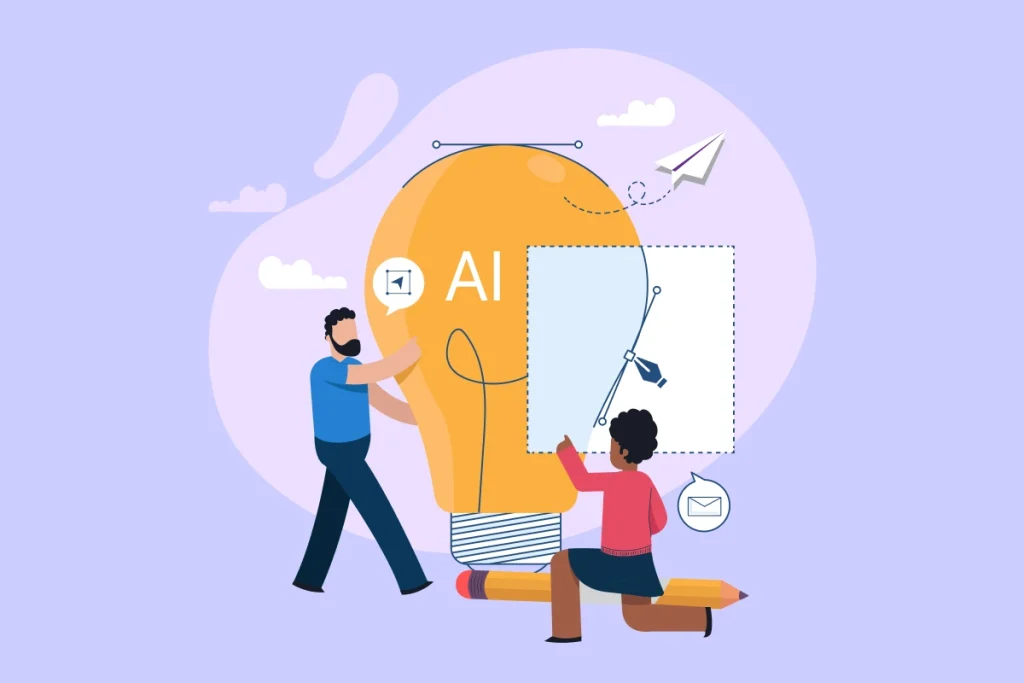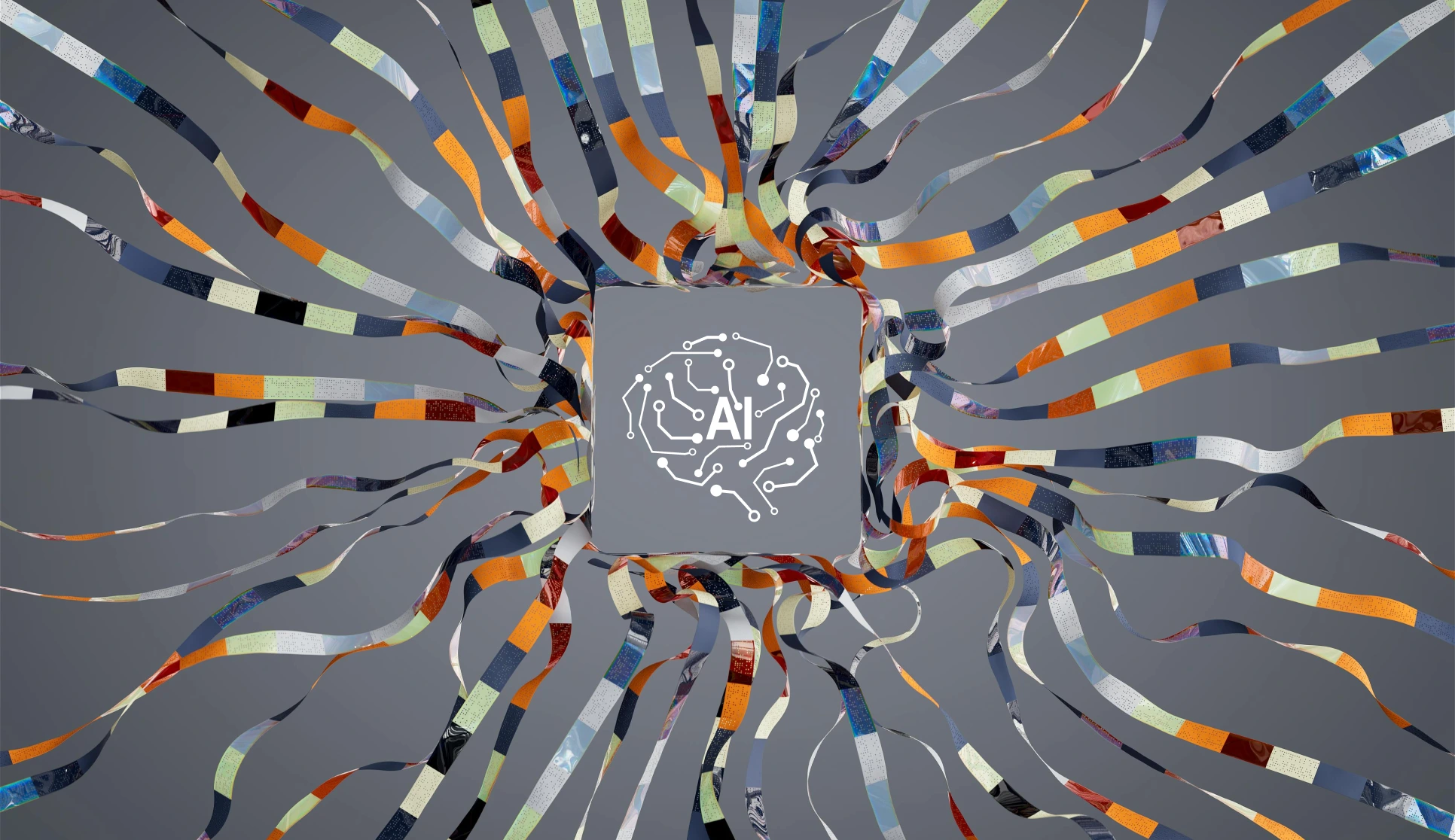It clicked when I realized that 90% of UX designers used Generative AI backward.
They leveraged AI to speed up tasks like generating mockups and creating rapid layouts. While these are valuable uses of AI, they’re missing the real opportunity.
I am a product designer who focuses on integrating AI with product design, especially for SaaS applications.
With a deep passion for innovation, I work daily to merge cutting-edge AI tools with design strategies to create efficient, user-centric solutions.
What is Generative AI?
Generative AI is an algorithm that creates new content based on input data, such as images, text, or designs.
An everyday use case in which AI tools like DALL·E generate unique visuals from text prompts.
These tools help designers rapidly prototype ideas and explore creative concepts without starting from scratch, accelerating the design process and expanding creative possibilities.
The true power of AI in UX design goes far beyond these conventional methods.
AI can transform how we approach design problems, helping us unlock innovative solutions and elevate the creative process.
Here’s how AI can revolutionize UX design when used the right way:
1. Problem-Finding Superpowers

One of the most overlooked aspects of design is the initial problem framing.
AI excels at exploring different angles and perspectives, making it a powerful tool for challenging assumptions and rethinking how we approach user problems.
Instead of jumping straight into solutions, AI can generate multiple ways to find the user’s problem.
Ask it to generate 10 different perspectives, and you’ll be amazed at how it helps you break out of mental ruts.
This process can lead to fresh insights and new approaches you might not have considered otherwise.
AI for Finding Design Challenges:
- ChatGPT (OpenAI): You can generate multiple problem-solving scenarios by providing ChatGPT context and asking for various perspectives. It can also help refine user personas, highlight assumptions, and suggest different design challenge approaches.
- Framer AI: Framer uses AI to explore different ways to approach design challenges, helping you reframe user problems and experiment with various design solutions.
2. Creative Idea Generator

Too often, designers ask AI to refine wireframes and make them look “pretty.”
While this helps finalize designs, it’s not where AI shines. Instead, think of AI as your creative idea generator—someone who can help generate a wide array of ideas at lightning speed.
Rather than relying on AI to generate polished mockups, ask it to provide 100 wild, unconventional solution ideas.
Let it push your creativity beyond the obvious.
You can then combine the AI-generated concepts with your expert judgment to refine the best ones and move forward with your design.
This combination of AI’s boundless ideation and your creativity leads to innovative solutions that would be hard to achieve otherwise.
AI for Idea Generator:
- DALL·E (OpenAI): DALL·E is an image-generation tool that can help you generate creative visual ideas quickly. It’s useful for brainstorming concepts, sketching wireframes, and exploring novel designs based on text prompts.
- Designify: A tool that uses AI to automate the ideation process by providing creative assets, like color palettes and design ideas, based on your brief or mood boards.
- Deep Dream Generator: This tool is perfect for pushing the boundaries of creativity. It generates visual ideas using AI to manipulate and morph your existing designs or concepts into something new and unconventional.
3. Speeding up the Design System

While most designers use AI for tasks like generating individual screens, there’s an opportunity to think bigger.
AI can evolve and accelerate entire design systems, helping to streamline workflows and maintain consistency at scale.
Think beyond individual screens—use AI to generate consistent components, create documentation, and develop accessibility guidelines for your design system.
This will help you establish a cohesive design language and ensure that your product is scalable, accessible, and user-friendly from start to finish.
AI for Speeding Design System:
- Figma + AI Plugins (e.g., Magician, Design AI): Figma offers a wide range of AI-powered plugins that can help automate tasks, from component generation to layout design. With these tools, you can quickly build consistent design systems, ensure accessibility guidelines are met, and accelerate the design process.
- Uizard is an AI-powered design tool that allows you to create interactive prototypes from simple sketches or wireframes quickly. It can also help scale design systems and generate multiple iterations rapidly.
- Sketch2Code (Microsoft): This tool transforms hand-drawn wireframes into HTML code using AI, helping you accelerate the process of building consistent user interfaces and components for your design system.
GenAI can also assist with:
- Analyzing extensive user data
- Streamlining design prototyping and testing
- Enhancing UX and product copy
- Boosting design accessibility
- Tailoring the user journey
- Reducing design bias
- Personalizing product experiences
Conclusion: AI as a Creative Augmenter, Not a Replacement
The real power of AI isn’t in replacing designers. It augments your creativity and helps you work at a higher level.
When used as a strategic thinking partner, AI can empower you to approach problems with fresh perspectives, generate innovative ideas rapidly, and accelerate the evolution of design systems.
So, stop using AI just as your production assistant.
Start making it your strategic partner in the creative process, and watch how it transforms your design thinking and approach.
The future of UX design is not just about efficiency; it’s about creative collaboration with AI that will push the boundaries of what’s possible.
Let AI fuel your SaaS design creativity.
Turn your SaaS Product Design Ideas into robust AI-driven solutions.
Generative AI is an enhancer, not a replacement. When applied strategically, it elevates your design process, driving better, more user-centric product experiences.
